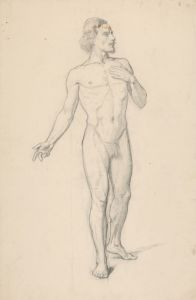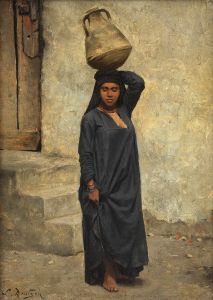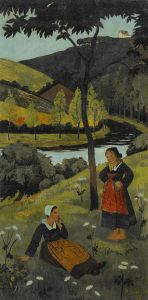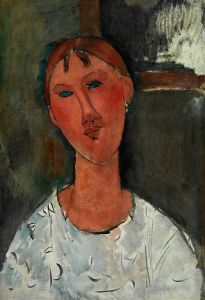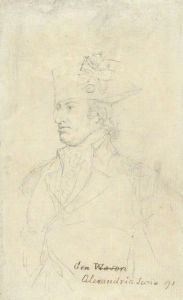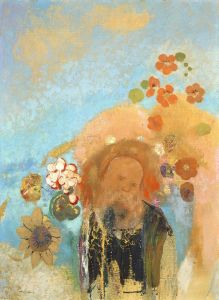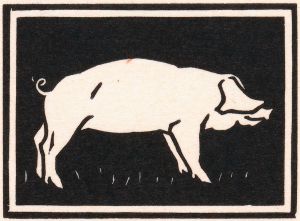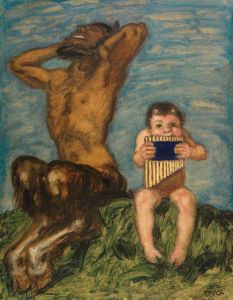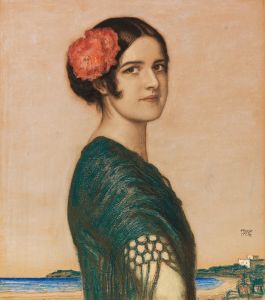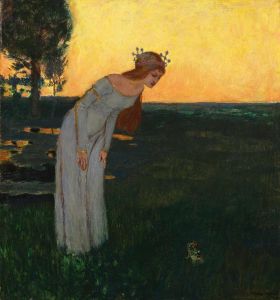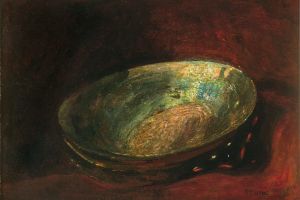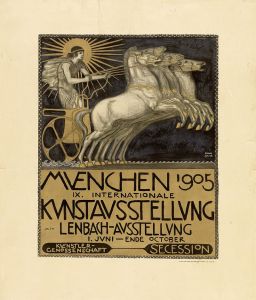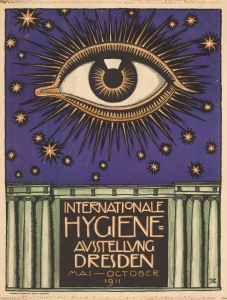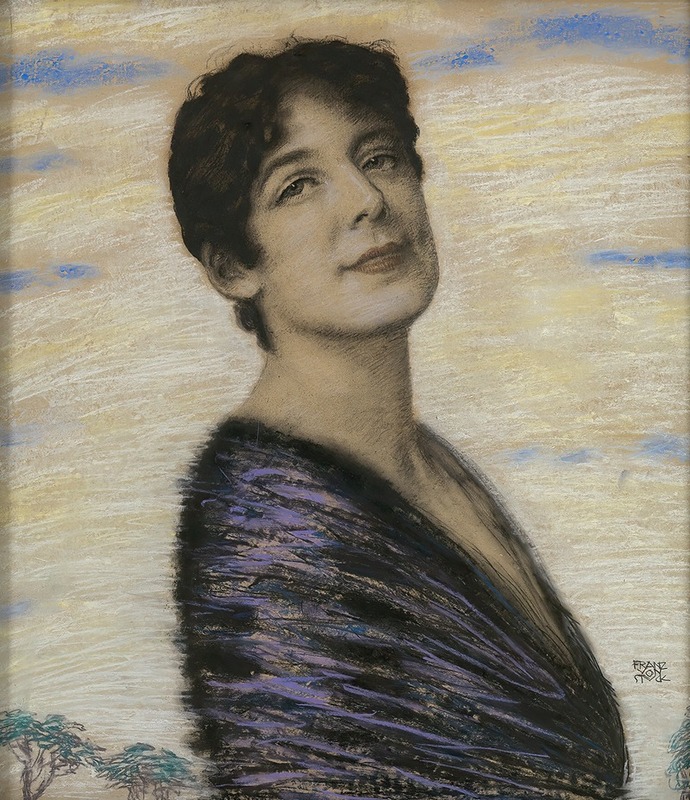
Mary von Stuck
A hand-painted replica of Franz von Stuck’s masterpiece Mary von Stuck, meticulously crafted by professional artists to capture the true essence of the original. Each piece is created with museum-quality canvas and rare mineral pigments, carefully painted by experienced artists with delicate brushstrokes and rich, layered colors to perfectly recreate the texture of the original artwork. Unlike machine-printed reproductions, this hand-painted version brings the painting to life, infused with the artist’s emotions and skill in every stroke. Whether for personal collection or home decoration, it instantly elevates the artistic atmosphere of any space.
Franz von Stuck was a prominent German painter, sculptor, and architect, known for his role in the Munich Secession movement and his contributions to Symbolism in art. One of his notable works is the painting "Mary von Stuck," which depicts his daughter, Mary. This painting is an example of Stuck's ability to blend personal subject matter with the stylistic elements of Symbolism.
Franz von Stuck was born on February 23, 1863, in Tettenweis, Bavaria. He showed an early talent for art and went on to study at the Munich Academy of Fine Arts. Stuck gained recognition in the late 19th and early 20th centuries for his mythological and allegorical paintings, which often featured dramatic lighting and a strong sense of mood. His works are characterized by their rich color palettes and the use of symbolism to convey deeper meanings.
"Mary von Stuck" is a portrait of Stuck's daughter, who was born in 1896. The painting captures the innocence and youth of Mary, showcasing Stuck's skill in portraiture. Unlike his more mythological works, this painting focuses on a personal and intimate subject, reflecting the artist's affection for his daughter. The portrait is noted for its attention to detail and the delicate rendering of Mary's features, which highlight her youthful charm.
Stuck's approach to painting was influenced by his interest in the Symbolist movement, which sought to express ideas and emotions through symbolic imagery and themes. In "Mary von Stuck," while the subject matter is straightforward, the execution reflects Stuck's Symbolist tendencies through the use of light and shadow to create an ethereal atmosphere. The painting is a testament to Stuck's versatility as an artist, capable of capturing both the mythical and the personal with equal skill.
Throughout his career, Franz von Stuck was an influential figure in the art world. He was one of the founding members of the Munich Secession in 1892, a group that sought to break away from the traditional academic art scene and promote modern art. Stuck's work, including "Mary von Stuck," played a significant role in shaping the direction of German art during this period.
In addition to his painting, Stuck was also a talented sculptor and architect. His home and studio, known as the Villa Stuck, is a masterpiece of Art Nouveau architecture and design. Today, it serves as a museum dedicated to his life and work, housing many of his paintings, sculptures, and personal artifacts.
"Mary von Stuck" remains an important piece within Stuck's oeuvre, illustrating his ability to capture the essence of his subjects with sensitivity and depth. The painting not only reflects his technical prowess but also provides insight into his personal life and the close bond he shared with his daughter. As with many of Stuck's works, "Mary von Stuck" continues to be appreciated for its artistic merit and its contribution to the Symbolist movement in art.





